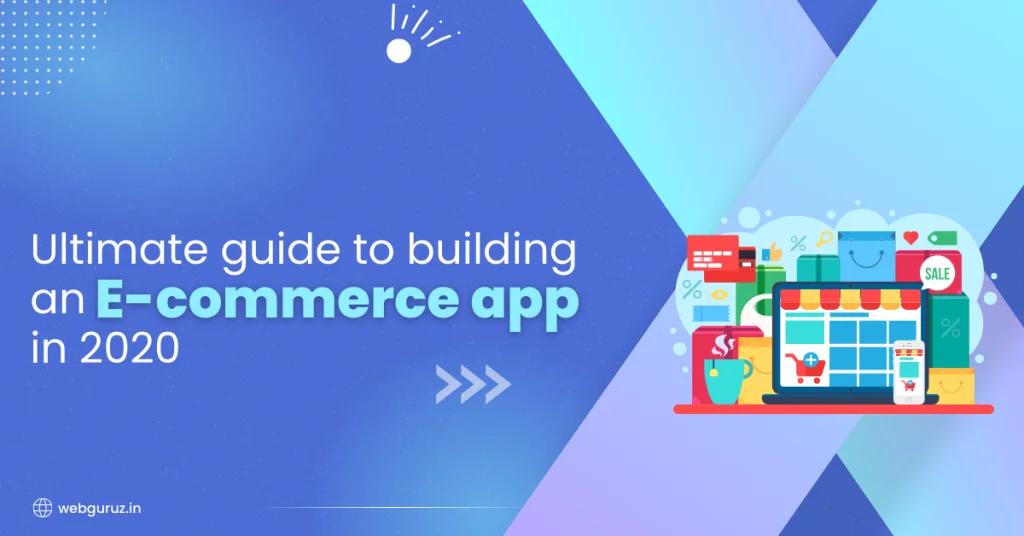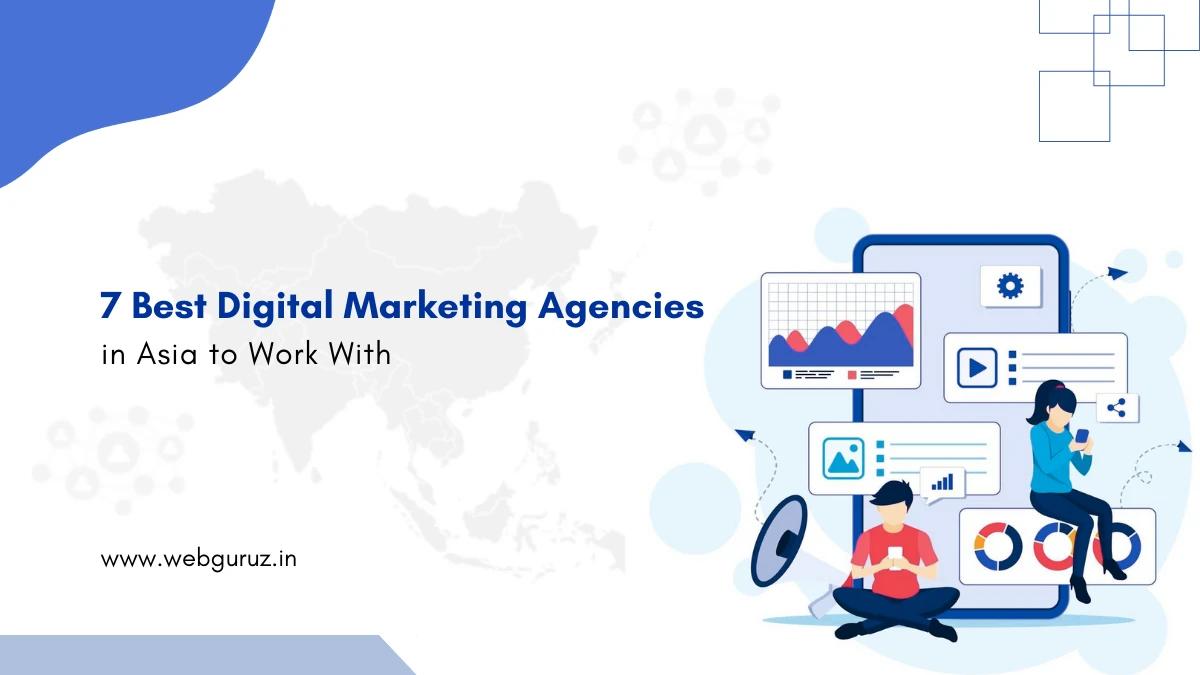Mohit Bhatt
2025-08-22
7 min read
7 Best Digital Marketing Agencies in Asia to Work With
Finding the right digital marketing agency for your business can feel like searching for a needle in a haystack.
Read More
Want to shop? Of course-Tap the App!
We are living in the smart era where all we need to do is just tap the app for anything we need!
Not so long ago it was vital to have an online presence for a business. But now having a responsive website design is the need of the hour! E-commerce businesses have to be visible on smart devices in the form of apps so that customers can easily place orders with just a tap!
If you need an e-commerce app for your business, it is recommended that you take professional commerce website design and development services. This is because professional e-commerce app developers not only have the required experience in the field but are also aware of the latest trends in app development that can provide you a competitive edge.
As we enter the new decade with 2020, stats reveal that global ecommerce sales are expected to reach a staggering $4.2 billion constituting 16% of the total retail sales. And, this is just the beginning!
(Source: https://www.bigcommerce.com/blog/ecommerce-trends/#14-ecommerce-trends-leading-the-way)
1. Location of the market: The choice of e-commerce platform, UI design, payment gateway, pricing, etc. are determined by the location of your market.
2. Audience: This is one of the primary requirements for designing your e-commerce app. You will need to find out what devices (Android/ iOS) the majority of your target audience uses. This will help you decide the appropriate platform for your e-commerce app that will offer you the best ROI.
You will also need to find out the demographics and their preferences, etc. of your audience. Data analytics can provide you some insights for finding out details about your audience.
Based on your target market you can decide on the UI design that is most likely to attract the audience.
3. List of Products: You will need to provide a complete list of your products in the app. The product list should be complemented with product descriptions and images of products, variations in the products, etc.
4. Search Bar: A search bar that includes filters such as price, make, material, etc. simplifies the selection process for your customers saving their time.
5. Simple Checkout: The checkout process must be simple so that the customers can easily complete their shopping.
Also, make sure that you offer safe and secure payment options so that you gain the trust of your customers.
Next, let us look at the team needed for building the app.
Your domain is your web address. It is also known as the URL for your business. It is what your buyers will type in the search bar to find your website.
Select a domain name that reflects the nature of your business. It is important to choose a domain name that includes keywords relevant to your business. This serves to purposes-firstly, it clearly indicates to your audience what products you offer and secondly including keywords helps in high ranking of your website on search engines.
A domain needs to be purchased from domain hosting services such as GoDaddy, Google Domains, etc.
The e-commerce platform is in essence where the e-commerce site exists online. There are several free and paid e-commerce platforms available to choose from. You can compare the features of different platforms and choose the most appropriate one according to your business needs.
Dedicated e-commerce platforms with integrated features such as secure payments, shipping, email marketing, etc. are ideal for hosting an e-commerce website. However, they need to be subscribed to. Some examples are BigCommerce, Shopify, etc.
WordPress platform is a popular choice for e-commerce stores. This is because it offers the flexibility to build anything with the help of plugins. Besides, it is a low-cost option. WordPress sites can be converted to e-commerce sites by adding plugins such as WooCommerce, BigCommerce, etc.
Free e-commerce platforms have a restriction on the number of products that can be listed. Besides, they also offer fewer features than paid platforms. Some examples of free platforms are Square free online store, Freewebstore, etc.
Logo: First of all, you will need to create a logo with which your audience can associate your brand.
Branding: You can build your brand using images on Canva. Alternatively, you can create a unique image for your brand to tell your story.
Product Listing: Product listing should include descriptions, photos, videos, etc. Also, make sure to include variations in the product, indicate prices, discounts in any, and any other relevant information.
About Us: Include an “About Us” section on the website that tells your story. Tell your audience about the vision/mission of your organization. Make sure that this content is created such that it engages your audience.
Service-Related Details: Make sure that you include details such as privacy policy, returns/exchange policy, shipping details, FAQs (Frequently Asked Questions), etc. to resolve any queries your customers might have.
Chatbots: One of the trending features in websites is to include AI-based chatbots that interact with the audience enhancing the customer experience.
According to data, 60% of the customers prefer having websites/apps where chatbots answer their queries. Hence, it comes as no surprise that 80% of businesses are expected to include chatbots in 2020. (Source: https://www.bigcommerce.com/blog/ecommerce-trends/#14-ecommerce-trends-leading-the-way)
Blog Section: Blogging is beneficial for a website not only because it engages the audience but if done right, it has the potential to improve the ranking of the website on search engines.
All these components should be effectively organized on the website. The final website should be attractive and include relevant content that engages the audience.
The website should not be cluttered and it should be easy to navigate so that the visitors can easily find their way.
If you use e-commerce platforms such as Shopify or BigCommerce, they offer built-in payment processing and tax calculation set up. Most e-commerce platforms also let you connect your own payment gateway and merchant account.
Once you set up your payment processor, you will be able to configure sales tax rates that need to be collected from buyers. Sales tax depends on your state and the sales volume.
You will need to integrate shipping software to the e-commerce platform so that orders are connected to the shipping software. This helps select carriers, shipping methods, the printing of labels, and automatically updating the customers when orders are shipped.
E-commerce platforms offer integrated marketing tools. These tools enable building and using email lists to connect with customers or send promotions across social media channels.
It is vital to ensure that your website is free of bugs and errors before it is launched. You can run the website with a few test orders to verify its functionality and take corrective action if required.
These are essential stages for designing an e-commerce website!
Looking for professional e-commerce website design & development services? One of the best e-commerce websites designing companies in India is Webguruz Technologies Pvt. Ltd. We provide you cost-effective e-commerce website design services tailored for your business.

Mohit Bhatt
2025-08-22
7 min read
Finding the right digital marketing agency for your business can feel like searching for a needle in a haystack.
Read More
Mohit Bhatt
2025-08-20
7 min read
Choosing the right HubSpot Hubs for your business can feel overwhelming, especially when you’re looking at multiple options that seem to overlap in functionality.
Read More
Mohit Bhatt
2025-08-11
7 min read
Google’s AI Overview has changed how people search and find information online.
Read More